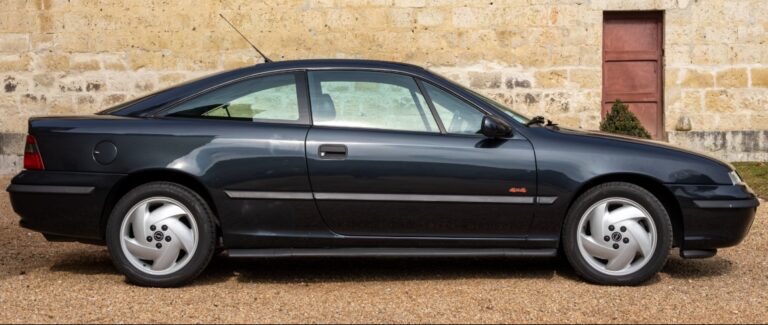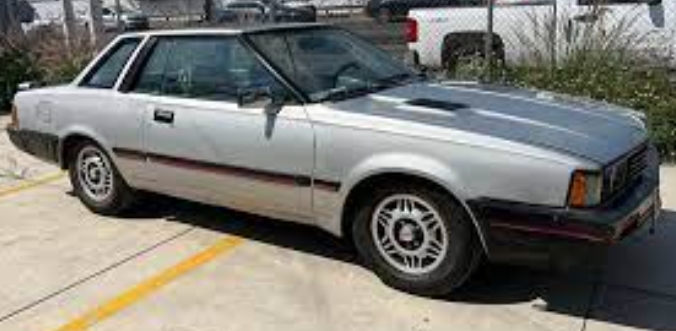The Evolution of the Pontiac Trans Sport
The Pontiac Trans Sport stands as a noteworthy chapter in the history of minivans, embodying the innovative spirit of General Motors in the late 20th century. Introduced as an answer to the burgeoning demand for family-friendly, versatile vehicles, the Trans Sport underwent significant transformations from its inception in the late 1980s through its discontinuation in the early 2000s. This article traces the detailed evolution of the Pontiac Trans Sport, including production years, models, trim levels, and key features that defined each generation.
Origins and Introduction (1989–1996)
Background and Development
In the mid-1980s, GM recognized the rising popularity of minivans, driven by the increasing need for spacious, practical family vehicles. Chrysler’s Dodge Caravan and Plymouth Voyager had successfully popularized the segment, prompting GM to develop its own offering. The result was the Pontiac Trans Sport, which was introduced for the 1990 model year as a 1989 development model.
First Generation (1989–1996)
- Production Years: 1989–1996
- Platform: Based on the GM U-body platform, sharing components with the Chevrolet Lumina and Oldsmobile Silhouette.
- Design: The Trans Sport featured a distinctive, aerodynamic wedge shape with a large, wraparound windshield and flush-mounted glass. Its design was a departure from traditional boxy minivans, emphasizing aerodynamics and style.
- Body Styles: Primarily a front-wheel-drive minivan with optional all-wheel-drive in later models.
- Trim Levels:
- Base Model: Offered standard features with minimal amenities.
- SE (Special Edition): Introduced as a higher trim with additional comfort and convenience features.
- GT (Grand Touring): Launched in later years, emphasizing sportier styling and features.
Key Features and Changes
- Engines: The initial models were equipped with a 3.1-liter V6 engine producing approximately 140 horsepower. In 1994, a 3.4-liter V6 engine was introduced, offering more power.
- Transmission: 4-speed automatic transmission was standard.
- Interior: Notable for its spacious interior, flexible seating configurations, and optional leather upholstery.
- Innovations: The Trans Sport was among the first minivans to feature sliding doors on both sides, along with options like a rear-seat entertainment system and upgraded audio.
Facelift and Continued Production (1997–2005)
Second Generation (1997–2005)
- Production Years: 1997–2005
- Platform and Design: The second-generation Trans Sport was based on the redesigned GM U-body platform, sharing components with the redesigned Chevrolet Lumina and Oldsmobile Silhouette. The styling was more rounded and modern, with smoother lines and a more aerodynamic profile.
- Model Variants and Trim Levels:
- Trans Sport (Base): Continued as the entry-level model with standard features.
- Trans Sport SE: Offered additional comfort features, upgraded interior materials, and optional packages.
- Trans Sport GT: Focused on sportier styling and performance features, including unique exterior accents and upgraded suspension components.
- Trans Sport Montana: For certain markets, a special edition or renamed variant emphasizing luxury and features.
Design and Features
- Exterior: The second-generation models retained the wedge shape but with a more refined, less angular look. The sliding doors remained a key feature.
- Interior: Improved ergonomics, increased use of high-quality materials, and upgraded entertainment options.
- Powertrains:
- Standard 3.4-liter V6 engine.
- An optional 3.8-liter V6 engine was available in certain trims.
- Power output ranged from approximately 180 to 215 horsepower, depending on the engine.
- Transmission: Continued with a 4-speed automatic, with some models offering optional upgrades.
- Safety and Comfort: Introduction of optional traction control, anti-lock brakes, and enhanced safety features.
Discontinuation and Market Shift
Despite its updates, the Trans Sport faced stiff competition from more modern minivans and SUVs. By the early 2000s, consumer preferences shifted towards more refined, fuel-efficient, and feature-rich vehicles. Pontiac officially discontinued the Trans Sport after the 2005 model year, with its market segment increasingly dominated by newer models like the Chevrolet Uplander and other compact/minivan hybrids.
Special Editions and Notable Models
Throughout its production run, the Pontiac Trans Sport saw various special editions and trim packages aimed at capturing niche markets or adding luxury and sportiness.
- Trans Sport GT: Launched in the late 1990s, the GT trim aimed to appeal to younger buyers with sporty styling cues such as unique wheels, body-colored accents, and upgraded suspension.
- Trans Sport LE: Some markets offered a “Luxury Edition” featuring leather seats, premium audio, and additional convenience features.
- Trans Sport Montana: A badge used in certain markets representing a more upscale or limited edition model, often with added amenities.
Technical Evolution and Key Features
Engine and Drivetrain
- The early models’ 3.1-liter V6 was modestly powered but reliable.
- The introduction of the 3.4-liter V6 in 1994 marked a significant upgrade, providing better performance and fuel efficiency.
- The 3.8-liter V6 became available in later models, offering more horsepower for those seeking enhanced performance.
- Transmission remained largely consistent with a 4-speed automatic, with shifts in tuning for smoother operation over the years.
Interior and Comfort
- The Trans Sport was renowned for its spacious interior, configurable seating arrangements, and family-friendly features.
- Features such as premium sound systems, rear-seat entertainment systems, and power sliding doors became standard or available options in later models.
Safety and Technology
- Anti-lock brakes (ABS) were added in the mid-1990s.
- Traction control and airbags became standard features in the late 1990s and early 2000s.
- The vehicle’s design prioritized ease of access with wide-opening doors and low step-in height.
.
THIS might be a great place to get your new car from!
Or for those who are into the “car flipping” business, here’s an excellent resource for you!

.
Market Impact and Legacy
The Pontiac Trans Sport played a crucial role in shaping GM’s minivan offerings during its era. Its distinctive wedge-shaped design set it apart visually from more traditional minivans, though it also faced criticism for its unconventional styling. Despite mixed reception, it contributed to expanding the appeal of minivans as family vehicles with style and versatility.
Over time, the Trans Sport’s influence waned as newer designs, improved safety features, and better fuel economy became standard. Nonetheless, it remains a notable example of Pontiac’s attempt to blend sporty styling with family practicality.
Discontinuation and Aftermath
The early 2000s marked the decline of the Pontiac Trans Sport, largely due to shifting consumer preferences and increased competition from more modern minivans and SUVs. Pontiac phased out the Trans Sport after the 2005 model year, with the market moving towards crossover SUVs and more refined minivan models.
However, the vehicle’s legacy persists among enthusiasts, especially those interested in its unique styling and role in automotive history. Collectors and fans still appreciate the Trans Sport for its distinctive design and pioneering features in the minivan segment.
Conclusion
The Pontiac Trans Sport’s evolution from 1989 to 2005 reflects broader trends in the automotive industry, including shifts toward aerodynamics, safety, and family-oriented versatility. From its initial wedge-shaped design to its more rounded second-generation models, the Trans Sport embodies the era’s innovative spirit. While it ultimately bowed out of production due to changing market dynamics, its influence on minivan design and GM’s strategy remains noteworthy.
This comprehensive overview underscores the vehicle’s significance in automotive history, highlighting its models, trim levels, technological advancements, and legacy. The Trans Sport exemplifies how automotive manufacturers continually adapt to consumer needs, balancing style, practicality, and innovation.







